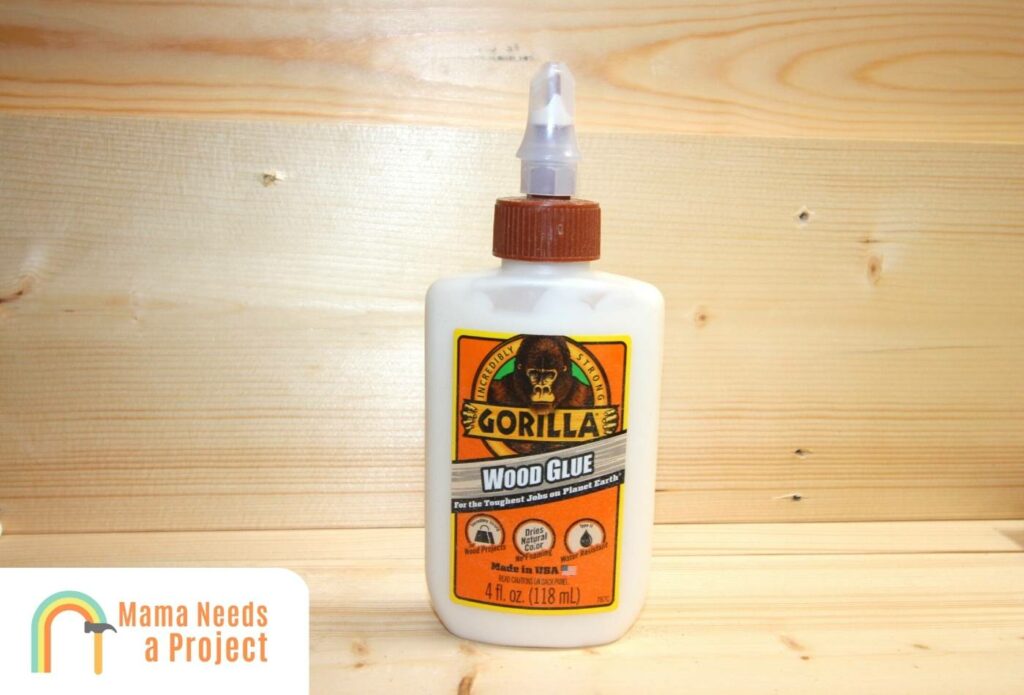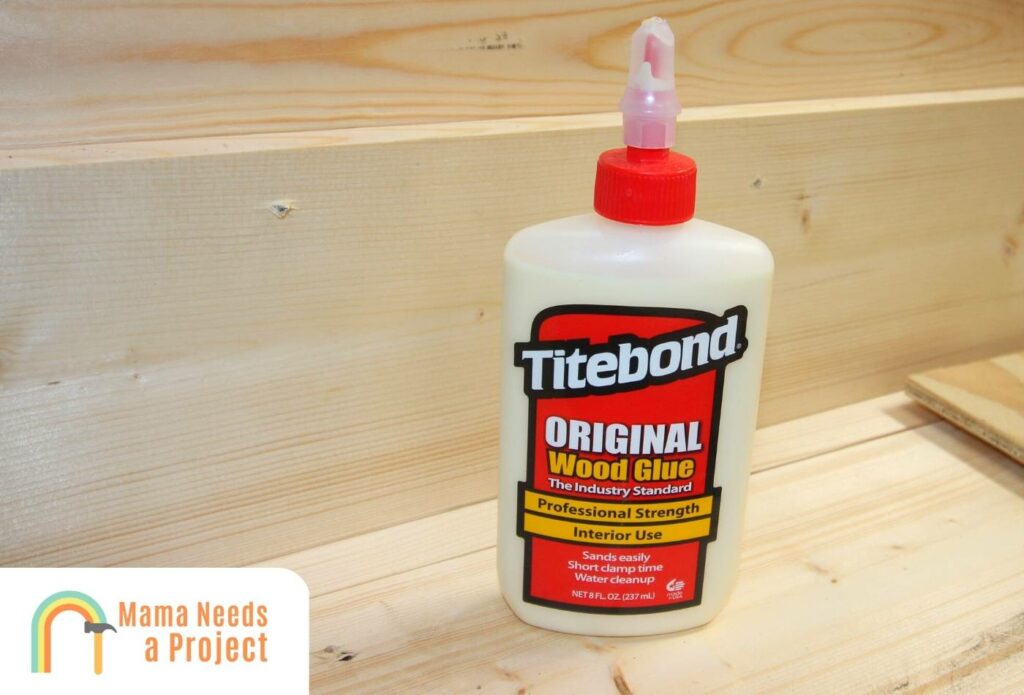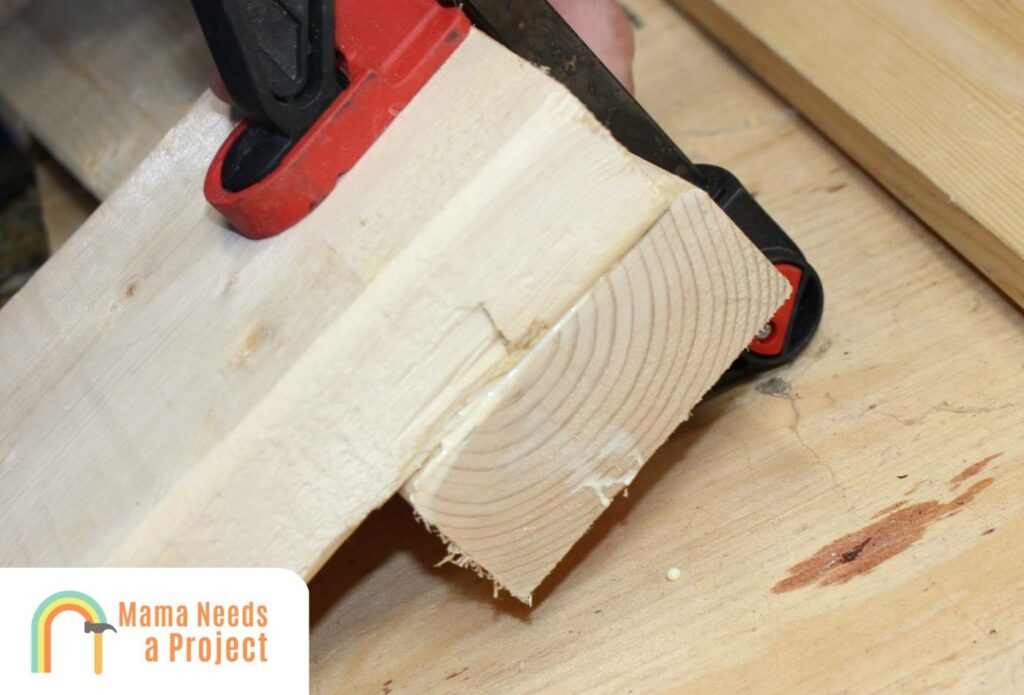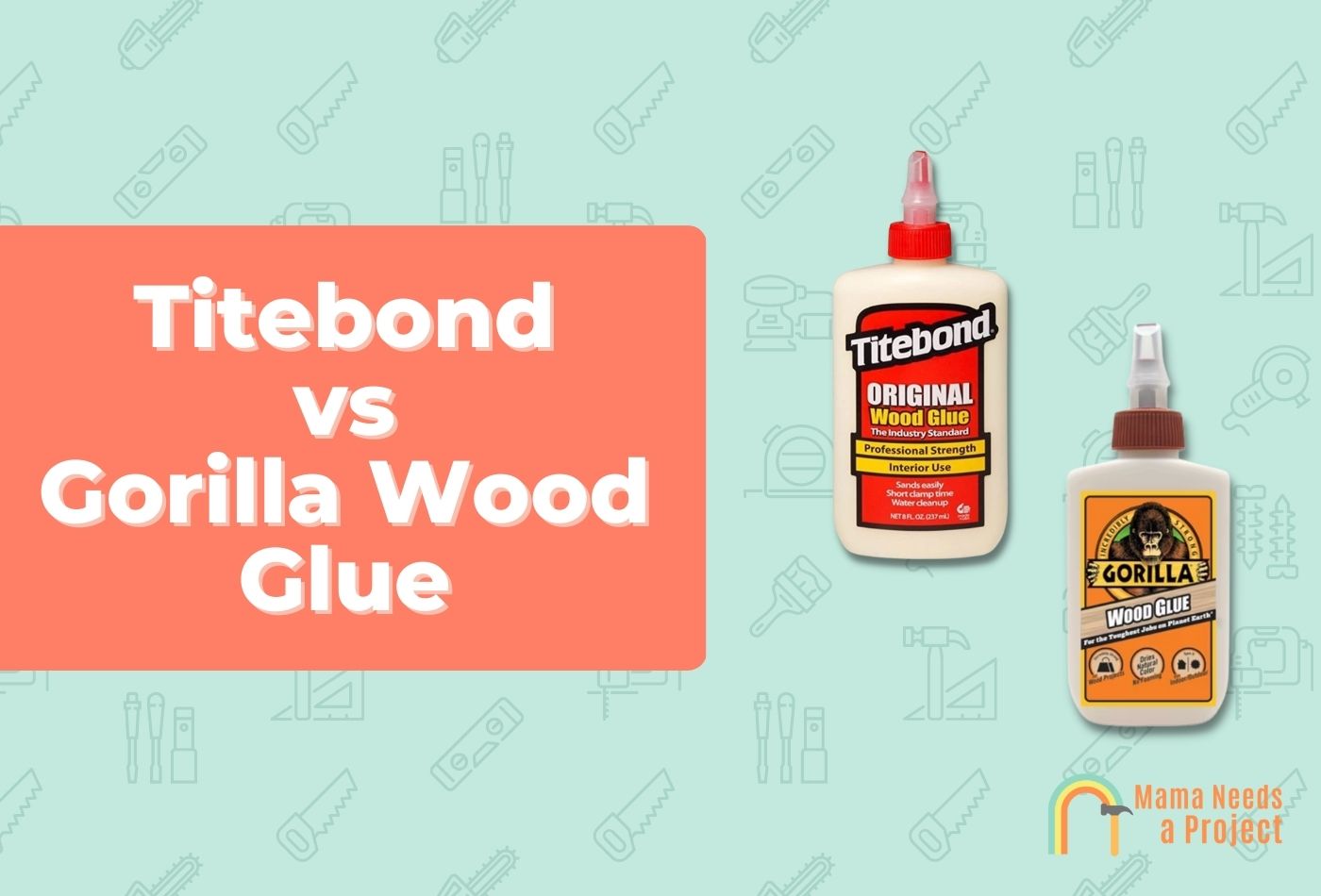Titebond vs Gorilla Wood Glue (My 2024 Review)
If you’re in the market for wood glue, two of the most popular brands you’ll run into are Titebond and Gorilla wood glue.
Both wood glues are reputable and have been around for quite some time. I have both glues in my workshop and they are both solid choices.
But which is better the better choice? Let’s find out!
Before beginning my comparison, it’s worth noting that I’ll be comparing the Titebond Original wood glue and Gorilla wood glue. Titebond manufactures several other types, but I’ll be comparing the original version (and the Ultimate version) in this review unless otherwise noted.
Gorilla Wood Glue vs Titebond
Strength

In terms of strength, both of these glues are extremely strong. Gorilla wood glue is a PVA glue that’s well known for its strength. Titebond Original is an aliphatic resin glue that’s also extremely strong.
That said, I found that Gorilla Wood Glue is stronger than Titebond Original but has a similar strength as the Titebond Ultimate wood glue.
In general, PVA glues can withstand heavy pressure, making them an ideal choice for many projects. They are one of the strongest wood glues you’ll find in my wood glue strength test, only behind some epoxy and polyurethane glues.
Durability & Water Resistance
Durability and water resistance is another key consideration when using wood glue. After all, you want the glue to remain strong throughout its lifetime.
I found that Gorilla wood glue is slightly more durable thanks to its strength and additional water resistance.
There is one instance where Titebond glue is a better option, colder temperatures. Titebond is rated for application above 50° F, while Gorilla wood glue is rated for applications above 55° F. While this isn’t a massive difference, it’s worth nothing if you’re working in colder temperatures.
Setting Time

Whenever using wood glue, you have a certain amount of time before it starts to become tacky and dry. This is known as the setting time.
Some projects might require a longer time to get your pieces of wood joined, so a longer setting time can be beneficial.
Both of these glues have a similar setting or assembly time, but Titebond wood glue’s is slightly shorter.
Titebond has an assembly time of 4 – 6 minutes while Gorilla wood glue has an assembly time of 5 – 10 minutes. This can vary depending on your working conditions, but is fairly accurate.
Drying Time & Clamp Time

The drying time for both of these wood glues are extremely similar. In most cases, it requires these glues around 30 minutes to start drying and they fully cure in about 24 hours.
As for clamp time, both glues recommend clamping for at least 20 minutes after application.
Shelf Life
Both glues have a similar shelf life of 2 years, although I’ve had bottles last much longer. To extend the shelf life of your glue, be sure to close the cap immediately after use and store it in a cool, dry place. I keep mine in a cabinet in my workshop and I’ve had some glues last over 5 years!
Versatility
When it comes to wood glue, you probably plan to use it when joining wood together, but can you use it one other surfaces?
Wood glues aren’t great at bonding materials and surfaces other than wood. Both Gorilla wood glue and Titebond should be avoided if you’re looking to glue plastic, stone, metal, or other surfaces. Instead, I’d recommend using a polyurethane glue like traditional Gorilla glue for these circumstances.
Price and Value
Both wood glues are priced extremely affordably. You can purchase both of these products for under $10 in most cases.
I have found that Titebond wood glue tends to be slightly less expensive, but not by much.
With both products, you can purchase them in different quantities that can reduce the price per ounce, which can be helpful if you use wood glue frequently like I do.
Gap Filling
While I don’t recommend filling gaps with a wood glue, it is possible and some DIYers will do it.
If you’re patching wooden surfaces, I’d recommend the Gorilla wood glue because it’s closer to the natural color of wood. Other than that, these wood glues are essentially the same. For a better result, I recommend using one of these wood fillers for gaps and holes.
Sanding & Staining
If you choose to use a wood glue as a wood filler, you’ll need to find one that you can sand and stain to match the surrounding wood.
Both of these glues are similar in accepting stain and the ability to sand them to match wood surfaces.
Overall Winner: Gorilla Wood Glue
Overall, I prefer the Gorilla wood glue over the Titebond wood glue for a few reasons. It’s slightly stronger, more water resistant, and more durable than the Titebond glue and it costs about the same (just a hair more).
Gorilla wood glue is tremendous at bonding wooden surfaces together and it’s one of the best wood glues you can find. It’s great for DIY projects or any woodworking project that requires you to join different wood surfaces together.
That said, Titebond wood glue is still an excellent option, and I’d recommend it in many cases. Titebond adhesives have been around for over 50 years, which speaks to their quality and performance.
Differences Between Titebond and Gorilla Wood Glue
The main differences between Titebond wood glue and Gorilla wood glue are the following:
- Gorilla wood glue is a PVA wood glue while Titebond is an aliphatic resin glue. Gorilla wood glue creates a slightly stronger bond that can be essential for some woodworking projects.
- Both wood glues are decent in terms of water resistance, but I found Gorilla wood glue was stronger and slightly more waterproof.
- Titebond wood glue dries more yellow, while Gorilla wood glue dries a darker off-white color. Check out this guide to the drying colors of wood glue for more info!
- Titebond wood glue performs slightly better when applied in colder temepratures.
Similarities Between Gorilla Wood Glue and Titebond Wood Glue
- Both wood glues are very strong and are great at bonding wood together.
- Both wood glues are affordable and can be purchased for under $10, although Gorilla wood glue is just a hair more expensive.
- Both glues take around the same amount of time to dry.
- Both wood glues recommend clamping for around 20 minutes for the strongest bond.
- Both can be cleaned up and wiped away with a damp rag and water.
Titebond III vs Gorilla Ultimate Wood Glue
Titebond comes in a few different variations – Original, Premium, and Ultimate wood glues. Each is slightly different than the others.
Similarly, Gorilla manufactures several different wood glues – the traditional wood glue and the Ultimate wood glue.
So which is better between Titebond III (Ultimate) and the Gorilla Ultimate wood glue?
In my testing, I found that the Titebond Ultimate wood glue was slightly better than the Gorilla Ultimate wood glue.
The Titebond Ultimate III glue is better for a couple of main reasons:
- It’s better in colder temperatures (rated for 47° F instead of 50° F)
- It creates a stronger bond and adhesive power
However, both are great for exterior projects because of how waterproof they are. They’re also much stronger and can last in more extreme conditions than traditional glues.
If you’re joining heavy duty materials or working outdoors, both of these products are great options.
In terms of price, Titebond Ultimate is slightly less expensive per ounce than Gorilla Ultimate wood glue, but not by much.
Is Titebond stronger than Gorilla glue?
No, Gorilla wood glue is stronger than Titebond Original wood glue. That said, Titebond is still a strong glue and many woodworkers exclusively use it on their projects. If you need more strength, you can opt for Titebond Premium or Ultimate wood glues. These are stronger than the original.
What is the best glue to glue wood to wood?
If you’re gluing wood to another wood surface, I recommend using Gorilla wood glue. It’s a strong and durable glue that creates a stronger bond than other glues. Gorilla wood glue is perfect for joining wood surfaces and it’s an inexpensive solution.
Final Thoughts
In the end, both Gorilla wood glue and Titebond are superb adhesives that I’d highly recommend for your woodworking projects.
That said, I found that Gorilla wood glue is stronger and more water resistant than Titebond, so I’d go with it given the choice between the two.
You can’t go wrong with either of these wood adhesives, I just liked the Gorilla brand slightly more.





